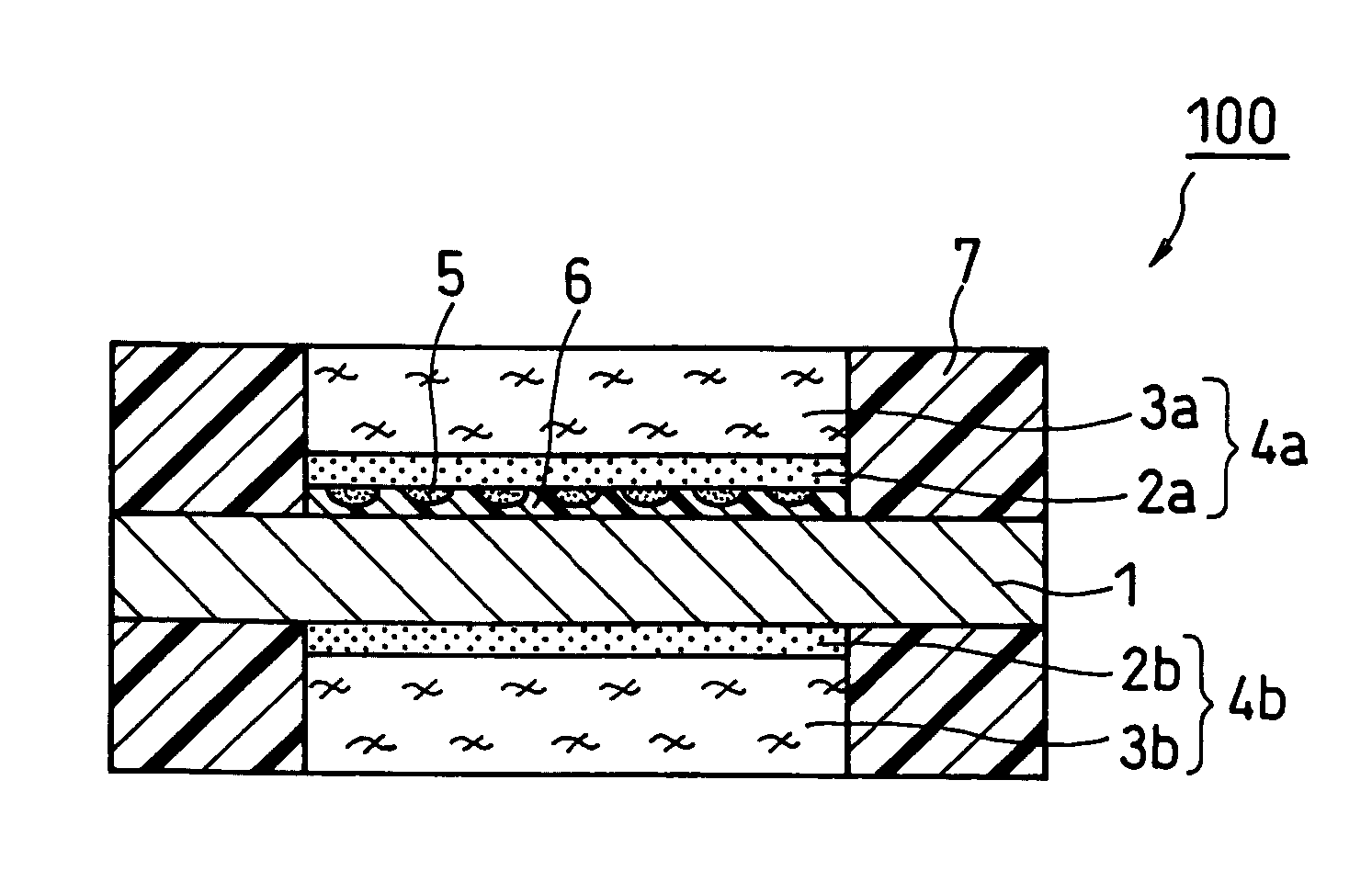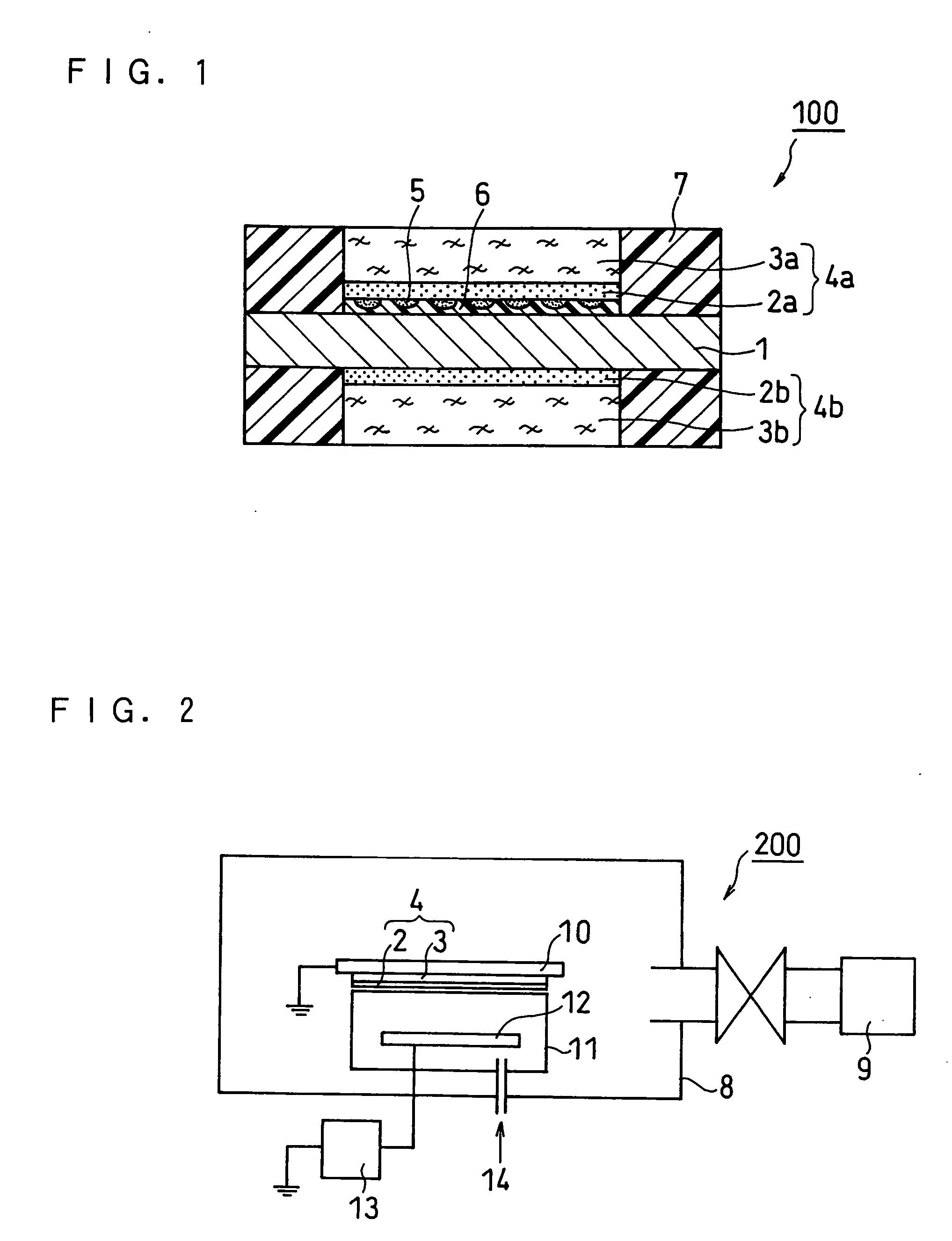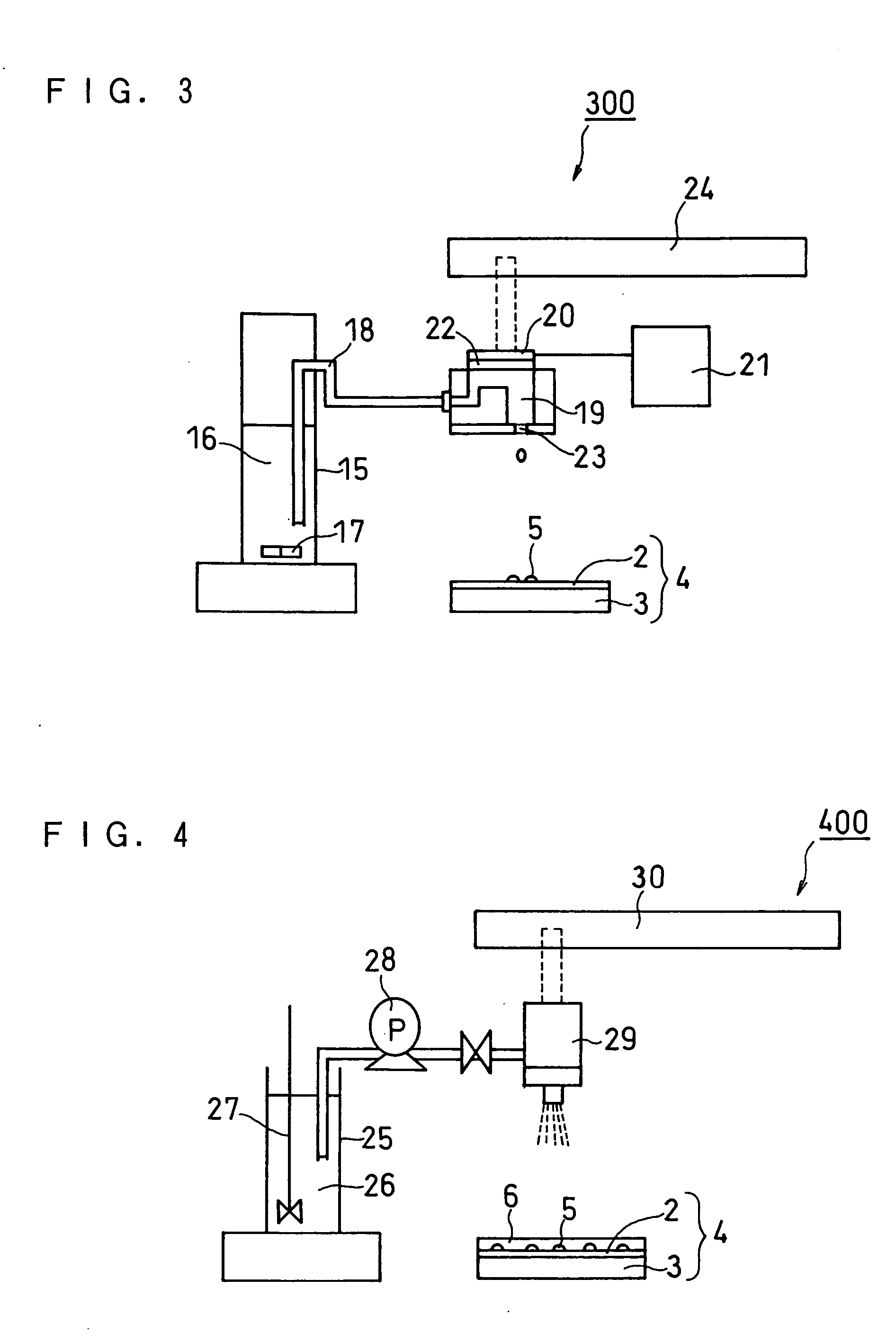Fuel cell and production method thereof
a fuel cell and electrolyte technology, applied in the direction of cell components, final product manufacturing, sustainable manufacturing/processing, etc., can solve the problems of reducing the catalytic activity of cathode, requiring more electric power and longer continuous operating time,
- Summary
- Abstract
- Description
- Claims
- Application Information
AI Technical Summary
Benefits of technology
Problems solved by technology
Method used
Image
Examples
embodiment 1
[0061]FIG. 1 is a schematic cross sectional view illustrating the structure of a membrane electrode assembly (MEA) of a fuel cell according to Embodiment 1 of the present invention. As shown in FIG. 1, a membrane electrode assembly 100 of a fuel cell of the present invention is composed of a hydrogen ion conductive polymer electrolyte membrane 1, an anode 4a and a cathode 4b positioned on each side of the polymer electrolyte membrane 1. The anode 4a is composed of an anode catalyst layer 2a and an anode diffusion layer 3a. The cathode 4b is composed of a cathode catalyst layer 2b and a cathode diffusion layer 3b.
[0062] On both sides of the polymer electrolyte membrane 1 are placed the anode catalyst layer 2a and the cathode catalyst layer 2b. On the outer side of the anode catalyst layer 2a is placed the anode diffusion layer 3a, and on the outer side of the cathode catalyst layer 2b is placed the cathode diffusion layer 3b.
[0063] Gas sealants 7 are placed on the outer periphery o...
embodiment 2
[0091]FIG. 5 is a schematic cross sectional view of a membrane electrode assembly (MEA) of a fuel cell according to Embodiment 2 of the present invention.
[0092] The MEA of Embodiment 2 of the present invention has the same structure as the MEA of Embodiment 1 of the present invention except that the electrolyte polymer layer 6 is not formed. Accordingly, the MEA of Embodiment 2 can be produced in the same manner as the MEA of Embodiment 1.
embodiment 3
[0093]FIG. 6 is a schematic cross sectional view illustrating the structure of a membrane electrode assembly (MEA) of a fuel cell according to Embodiment 3 of the present invention.
[0094] The MEA of Embodiment 3 of the present invention has the same structure as the MEA of Embodiment 1 of the present invention except that the discontinuous catalyst layer 5 is not formed. Accordingly, the MEA of Embodiment 3 can be produced in the same manner as the MEA of Embodiment 1.
[0095] The embodiments of the present invention have been described in detail above, but it should be understood that the present invention is not limited thereto.
[0096] The present invention is more specifically described below in the following examples, but it is to be understood that the present invention is not limited to the examples below.
PUM
 Login to View More
Login to View More Abstract
Description
Claims
Application Information
 Login to View More
Login to View More - R&D
- Intellectual Property
- Life Sciences
- Materials
- Tech Scout
- Unparalleled Data Quality
- Higher Quality Content
- 60% Fewer Hallucinations
Browse by: Latest US Patents, China's latest patents, Technical Efficacy Thesaurus, Application Domain, Technology Topic, Popular Technical Reports.
© 2025 PatSnap. All rights reserved.Legal|Privacy policy|Modern Slavery Act Transparency Statement|Sitemap|About US| Contact US: help@patsnap.com



